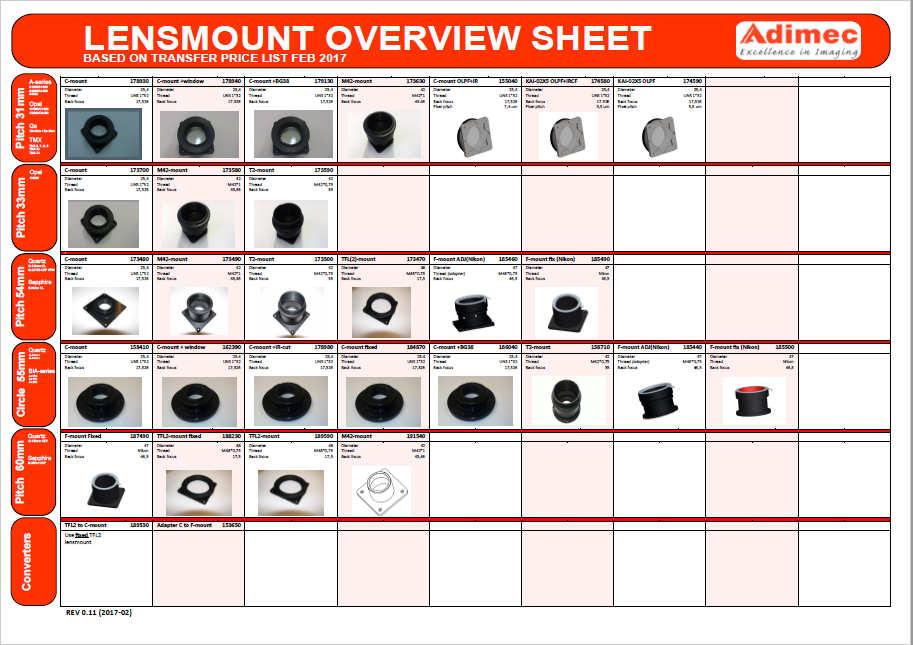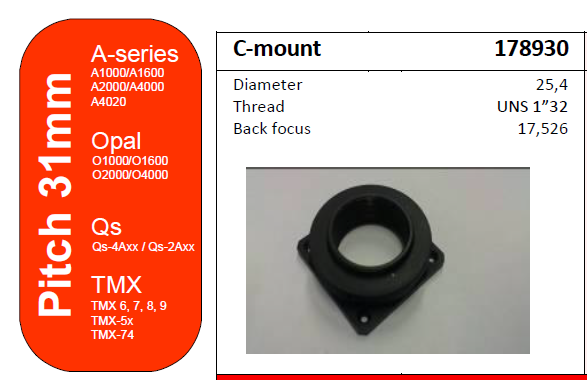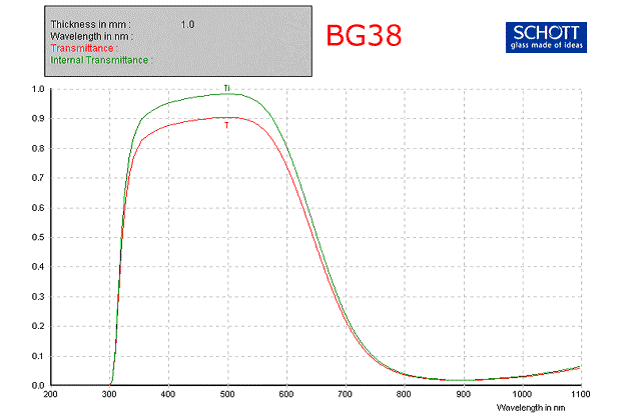For most Adimec cameras you get a flat plate interface that references to the sensor and all applications require optics in front of the camera so you really need a lens mount If you look at our lens mount selection it is easy to be overwhelmed, but fear not. This blog will cut through the complexity and make the choice relatively simple. The first task is to identify the camera that you need a lens for. Simple, right? Then you determine the screw pitch based on the model number from the handy dandy overview sheet below.

Okay, the type is very small and depending on your eyes it can be very difficult to read. I must blow up the version I use to see it. Let’s look at the first block. It says Pitch 31-mm and that is the spacing between the mounting holes on the face of the camera and in this case, matches a wide variety of cameras. In the block with the actual lens mount image we have the diameter, thread call out and back focus distance for each mount in the array. The back focus distance is correlated with the lens that the mount is for thus C-mount is 17.526-mm corresponding too the standard distance for a C-mount lens.

Going across the table, we see different mounts for different lenses from the C-mount to the M42 to the KAI-02X5 mount. Each of these is obviously for the lens you intend to use. Other mounts down the chart are for the Nikon F, T2 and TFL2 lenses. Some of these lens mounts come in fixed back focus or adjustable back focus for when you really need to have flexibility in your focus system.(?)
Most of the mounts are based on a square mount/camera interface except for the 55-mm circle mounts. But don’t let that throw you all the rest of the rules apply.
Other options are for windows and filters that serve various functions. A simple window serves as a debris shield for the sensor – something that can be cleaned easily instead of the very delicate sensor facit that requires extreme care and skill to clean. Then there is the BG38 UV & IR cutoff filter that preserves color rendition especially in camera sensors that have significant UV or IR sensitivity. There is an option for some mounts to have two different filters such as an optical long pass filter (OLPF) where you might only be interested in a certain portion of the spectrum and an IR cut-off filter (IRCF) again to block the camera’s sensitivity in the infrared.

So hopefully you see it is not so complicates after all. And, as always, if you have questions or issues, you can contact our world class technical support team for answers.
 日本語
日本語 English
English 简体中文
简体中文





Thanks for the insightful article!